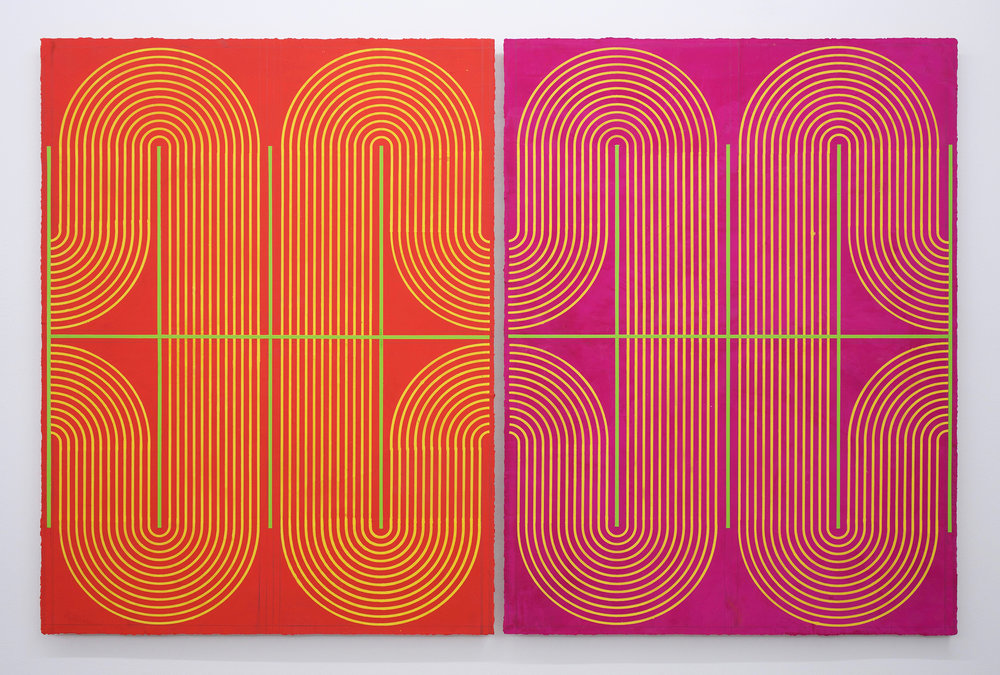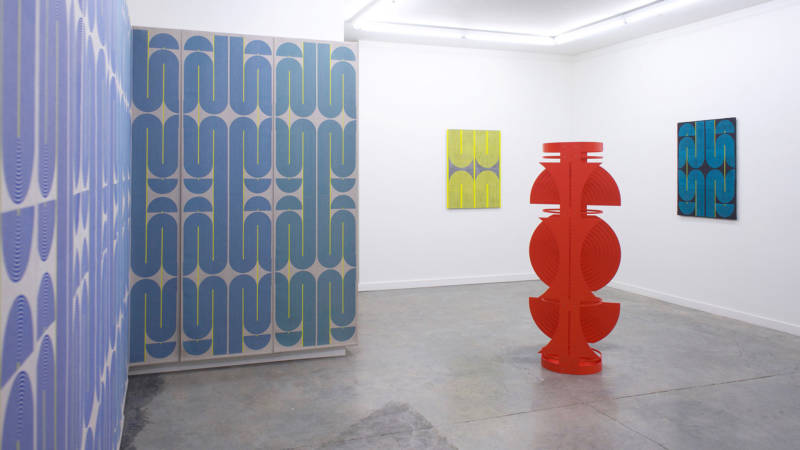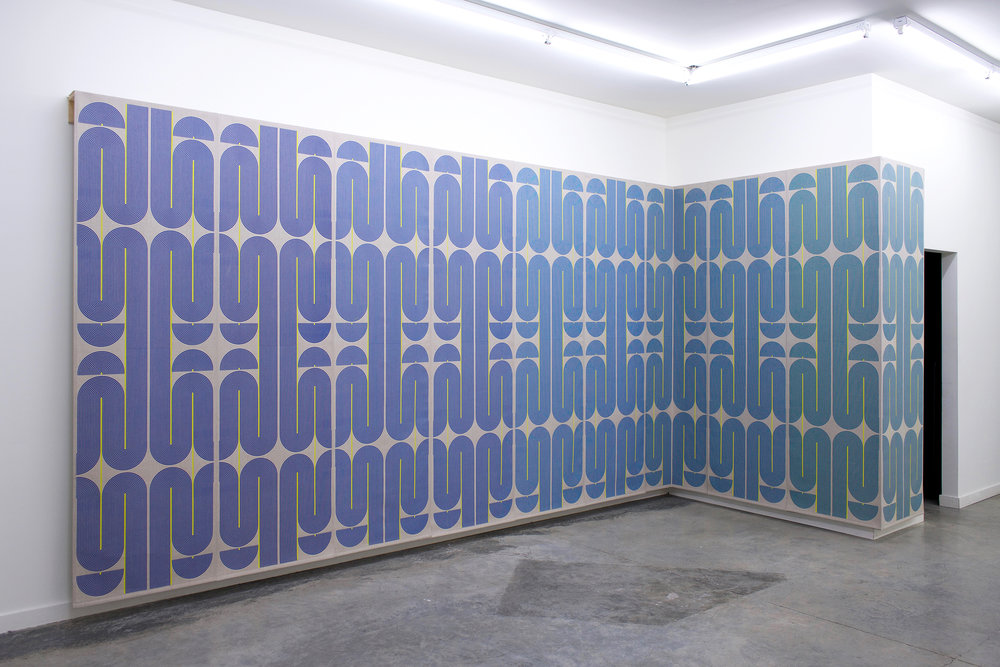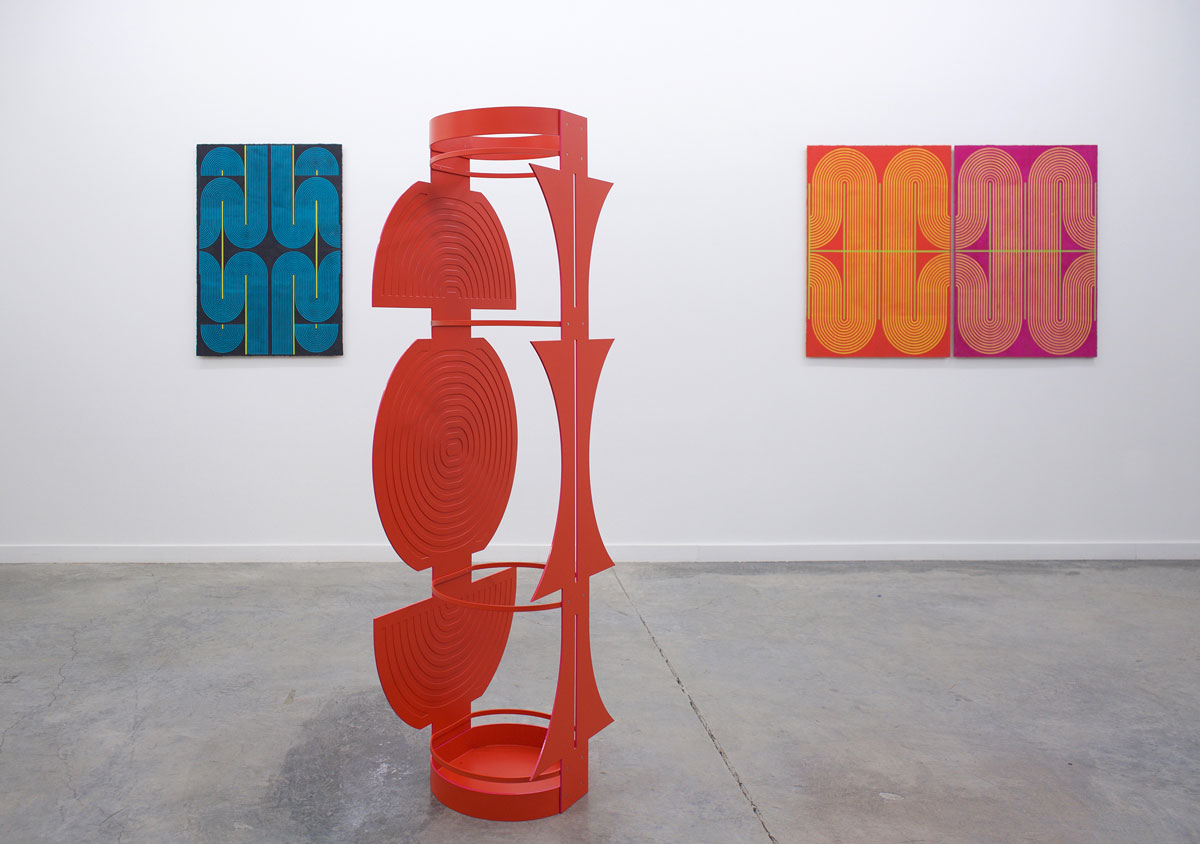Depending on which route you take to Romer Young Gallery, you might pass the Woods Operating Division of the San Francisco Municipal Transit System. And if you fail to notice this nondescript box of a building on 22nd Street, you’re forgiven. You have art to see.
But if your eye does chance upon this building, it’s likely because of its one decorative flourish: two red metal fences with four perfectly semicircular ends, faint echoes of Muni’s beloved “worm” logo, writ large and three-dimensional.
Just a block away, inside Romer Young, Elise Ferguson’s June Room provides more than an echo of that curvilinear graphic. The show is made up of the same building blocks that shape Walter Landor’s 1975 Muni logo: snakey curves and orderly stripes stacked atop one another, flowing into each other, turned 180 degrees.
But in June Room, Ferguson doesn’t stop at the ends of a groovy “M” and “I.” She assembles and rearranges her curves and stripes into a series of pigmented plaster paintings, a large-scale textile piece and one powder-coated aluminum sculpture.

Of course, Ferguson, based in Brooklyn, doesn’t spend her time riding Muni buses or waiting for the N-Judah (ahem). But the graphics that surely inspired Landor—Op art, Bay Area psychedelia—are, in turn, some of Ferguson’s reference points. Applying her patterns to a variety of media and with a joyful selection of colors, she tests their potency and effect. The results are mildly, wonderfully hypnotic.





